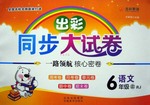题目内容
—Here are the best styles of the clothes. Which one do you like?
— _______. They are not so nice as I expected.
A. Neither B. All C. Nothing D. None
D
解析:
none 可视为 I like none of them 之省略。从下文的语境看,空格处只能填空一个表否定意义的词。据此首先排除B;虽然A、C、D均表否定意义,但neither 与前面的best(既然使用最高级,说明有三者或多者在作比较)不吻合;而 nothing 表示“什么也没有”,不合语境。

练习册系列答案
 出彩同步大试卷系列答案
出彩同步大试卷系列答案
相关题目